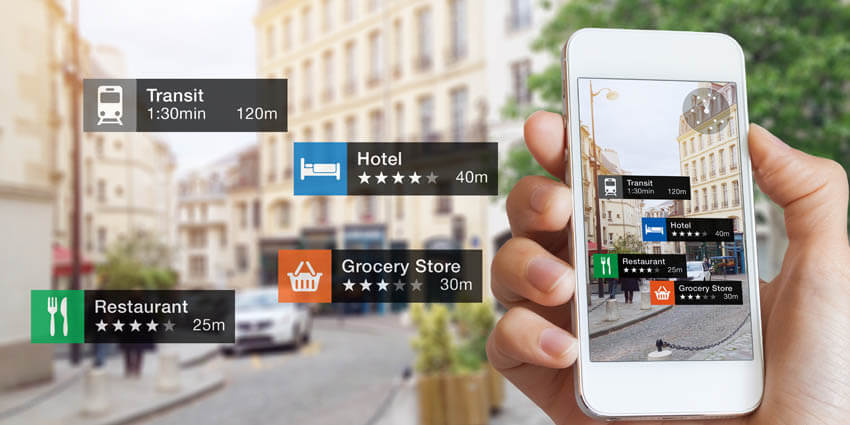Spatial computing and augmented reality (AR) are rapidly evolving, and 2025 appears to be a crucial year for their potential mainstream adoption. These technologies, which blend the digital and physical worlds, are poised to revolutionize various aspects of life, from how we work and learn to how we shop and interact with our environment.
Key Trends Driving Adoption
Several factors are converging to fuel the growth of spatial computing and AR. Advancements in hardware are making devices more accessible and user-friendly. Smart glasses and lightweight headsets now offer better resolution, eye-tracking, and gesture control while maintaining comfort for extended use. Devices like Apple's Vision Pro and Meta's Quest series are setting new standards for mixed reality experiences, while more affordable options like XREAL glasses are expanding accessibility to a broader audience.
Artificial intelligence (AI) is also playing a vital role, enhancing object recognition, gesture control, and environmental awareness. AI-powered AR experiences are becoming more contextually aware and flexible, enabling intuitive user interfaces and hands-free processes. Spatial computing is increasingly intelligent because of the incorporation of AI.
The rollout of 5G networks and advancements in edge computing are addressing previous limitations in hardware and bandwidth. Cloud XR allows devices to offload processing tasks to the cloud, reducing the need for high-performance headsets. 5G's low latency and fast data transfer enable seamless XR experiences on smartphones and wearables.
Impact Across Industries
The impact of spatial computing and AR is already being felt across various industries:
- Retail and E-commerce: AR is transforming the shopping experience by enhancing consumer confidence, reducing return rates, and improving online engagement. Virtual try-on features, smart mirrors, and interactive 3D product displays are becoming increasingly common. Retailers are deploying AR as part of their customer experience strategy, leading to higher conversion rates and larger basket sizes.
- Healthcare: XR is being used for surgical training, pain management, mental health treatment, and remote collaboration among specialists. AR applications can aid in surgical procedures by providing hands-free overlays with real-time data and anatomical models.
- Manufacturing and Engineering: Spatial computing improves operational efficiency and safety by enabling real-time visualization of processes and assembly lines. AR can guide workers through tasks step-by-step, reducing errors and minimizing downtime. Digital twins and 3D mapping simplify project planning and management in architecture and construction.
- Education and Training: Spatial computing offers interactive and immersive learning experiences, making education more accessible and effective. Virtual simulations and 3D models enhance understanding and retention across various subjects.
- Remote Collaboration: XR is transforming how teams collaborate online, with virtual meeting spaces, 3D whiteboards, and digital twins becoming standard tools for remote teamwork.
Challenges and Considerations
Despite the significant progress, several challenges remain for spatial computing and AR to achieve true mainstream adoption:
- High Costs: The cost of hardware, software development, and infrastructure can be a barrier, especially for smaller organizations.
- Data Privacy and Security: Spatial computing systems collect vast amounts of data, raising concerns about privacy and security. Clear ethical guidelines and robust data protection measures are essential.
- Lack of Standardization: Limited protocols and tools can lead to incompatibility between different spatial computing environments.
- User Experience: Unappealing headset designs, limited battery power, and potential for social isolation can hinder user adoption.
- Content and Applications: The lack of a "killer app" or compelling use case can slow down consumer adoption.
- Awareness and Understanding: Many people are still not fully aware of the difference between AR and VR and the potential benefits of spatial computing.
The Road Ahead
Overcoming these challenges requires a collaborative effort from technology developers, businesses, policymakers, and consumers. Addressing infrastructure needs, innovating in UI/UX design, navigating ethical considerations, and ensuring inclusivity are crucial steps.
Businesses need to identify high-impact applications relevant to their objectives and prioritize pilot projects to demonstrate value. Focusing on user-centered design, providing adequate training, and integrating spatial tools with existing systems are also essential for successful implementation.
As hardware becomes more affordable, software development becomes more accessible, and 5G networks become more widespread, spatial computing and AR are poised to become integral parts of our daily lives. By embracing these technologies, businesses and individuals can unlock new opportunities for productivity, innovation, and engagement.

















